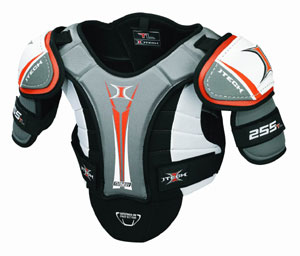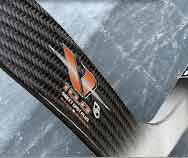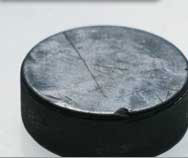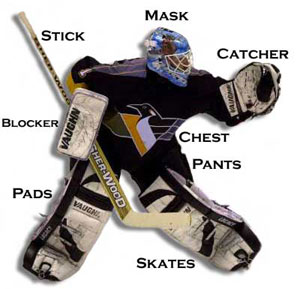
Equipments
Protective Hockey Gear
Pad all of your parts
 The game of hockey hasn't changed too much over the past few decades; actually it really hasn't changed much over the past 75 years. The game is essentially the same, the rinks, unfortunately, are the same size and while there have been a few rule changes here and there nothing drastic has taken place.
Where the game has evolved is the hockey player. Today's players are bigger, stronger, and faster and seem to physically mature at a younger age. With the evolution of the hockey player comes the evolution of hockey equipment. With players skating on razor sharp skate blades, firing hockey pucks at 100 mph and dishing out bone crushing checks, you need to make sure you are well protected. Hockey equipment has kept up with the changes and is now built for the modern day player.
The game of hockey hasn't changed too much over the past few decades; actually it really hasn't changed much over the past 75 years. The game is essentially the same, the rinks, unfortunately, are the same size and while there have been a few rule changes here and there nothing drastic has taken place.
Where the game has evolved is the hockey player. Today's players are bigger, stronger, and faster and seem to physically mature at a younger age. With the evolution of the hockey player comes the evolution of hockey equipment. With players skating on razor sharp skate blades, firing hockey pucks at 100 mph and dishing out bone crushing checks, you need to make sure you are well protected. Hockey equipment has kept up with the changes and is now built for the modern day player.
Other Hockey Equipment
Some other hockey essentials
While protective hockey equipment is designed to protect players from serious injury, there are other items of equipment that all hockey players usually wear or use. This inclu
des articles such as hockey equipment bags, hockey jerseys, and hockey socks.
Equipment bags are basically essential items of hockey gear as players need one large carrier to store and transport their equipment in. Many new models of hockey bags now come with wheels n the bottom of them to make things easier for you. Most of these bags also come with various compartments for your skates, wet uniform, and personal items.
Hockey Sticks
They’re not just made of wood anymore
 Along with skates, the hockey stick is one of the most personal and important pieces of equipment a player has. Without a stick you can't play the game. It's that simple. Even though the average hockey player may only have possession of the puck for about two minutes per game it's essential that they have the right stick to shoot, stickhandle, check and pass with authority and accuracy.
Along with skates, the hockey stick is one of the most personal and important pieces of equipment a player has. Without a stick you can't play the game. It's that simple. Even though the average hockey player may only have possession of the puck for about two minutes per game it's essential that they have the right stick to shoot, stickhandle, check and pass with authority and accuracy.
Hockey sticks aren't confined to on-the-ice players. Many people who play hockey never step foot on the ice, but still need a hockey stick, include players of roller/inline hockey, ball hockey, floor hockey and street hockey.
Hockey Pucks & Balls
For inline, road, ball, and ice hockey
Hockey Pucks
 Hockey pucks are made of vulcanized rubber and are one inch thick and three inches in diameter. Official pucks weigh between five and one-half ounces and six ounces. There are also lightweight pucks available for youngsters that weigh 4-5 ounces and heavier training pucks at about 10 ounces. Two ounce sponge pucks are also available. Pucks are usually frozen before professional games to keep them from bouncing on the ice. Usually the team or league's logo is imprinted on the top of the puck. Viceroy has been involved in hockey for about 40 years and is one of the top puck and ball producers. You can by pucks from anywhere between $1 and $5.
Hockey pucks are made of vulcanized rubber and are one inch thick and three inches in diameter. Official pucks weigh between five and one-half ounces and six ounces. There are also lightweight pucks available for youngsters that weigh 4-5 ounces and heavier training pucks at about 10 ounces. Two ounce sponge pucks are also available. Pucks are usually frozen before professional games to keep them from bouncing on the ice. Usually the team or league's logo is imprinted on the top of the puck. Viceroy has been involved in hockey for about 40 years and is one of the top puck and ball producers. You can by pucks from anywhere between $1 and $5.
Goaltending Equipment
The last line of defence
 On the ice, on the roller rink and on the street, the goaltender is a team’s last line of defense. The goalie needs to be well protected if he or she is going to be facing shots up to 100 mph. It's actually hard to believe that years ago goalies used to play the game with thin, shoddy equipment and without hockey masks, but I’m sure most of the old goalies still have scars on their bodies and faces to remind them.
On the ice, on the roller rink and on the street, the goaltender is a team’s last line of defense. The goalie needs to be well protected if he or she is going to be facing shots up to 100 mph. It's actually hard to believe that years ago goalies used to play the game with thin, shoddy equipment and without hockey masks, but I’m sure most of the old goalies still have scars on their bodies and faces to remind them.
Goalies wear some of the same basic equipment as every other player including hockey skates, hockey pants, socks, jocks, gloves, stick and helmet. However, the goalie’s protective gear is manufactured specifically for his or her need for extra protection. Goaltenders also wear extra padding such as goalie leg pads, chest protectors and arm pads, neck protectors, a hockey mask, a blocking glove and a goalie glovesfor catcher mitt. Many goalies will also wear even more goalie accessories under their equipment such as thigh guards, knee pads, toe caps, wrist guards and a hockey throat guard.
